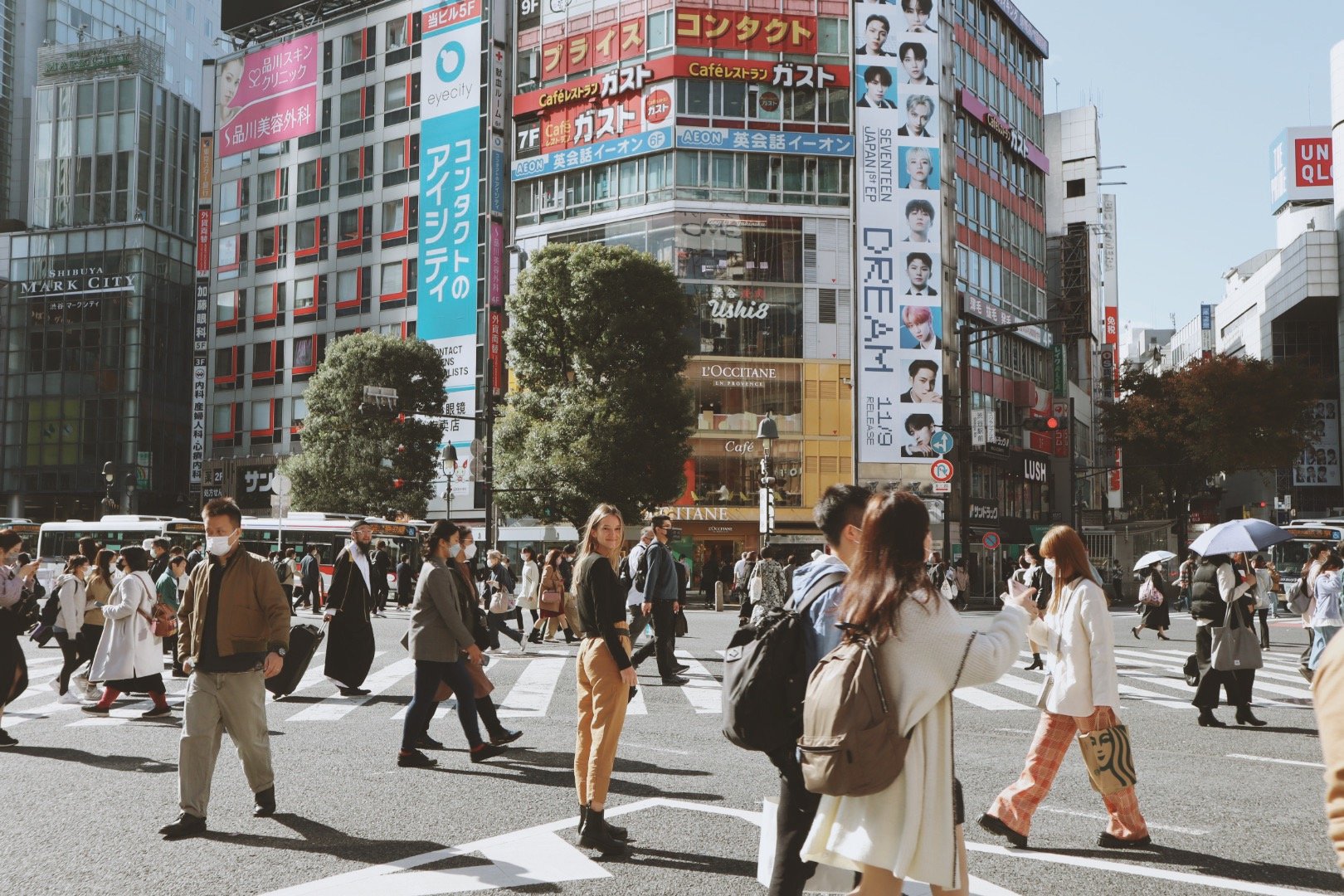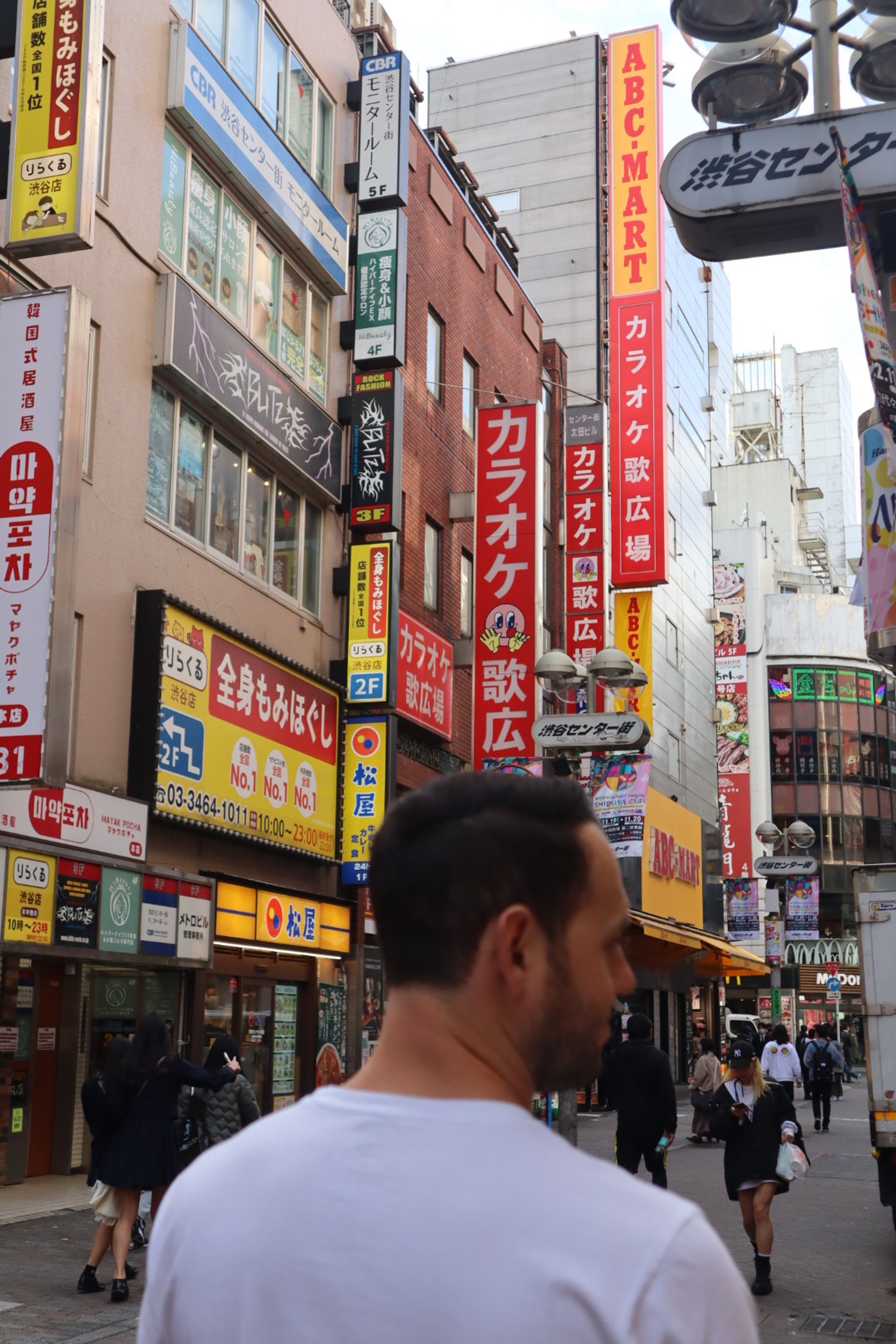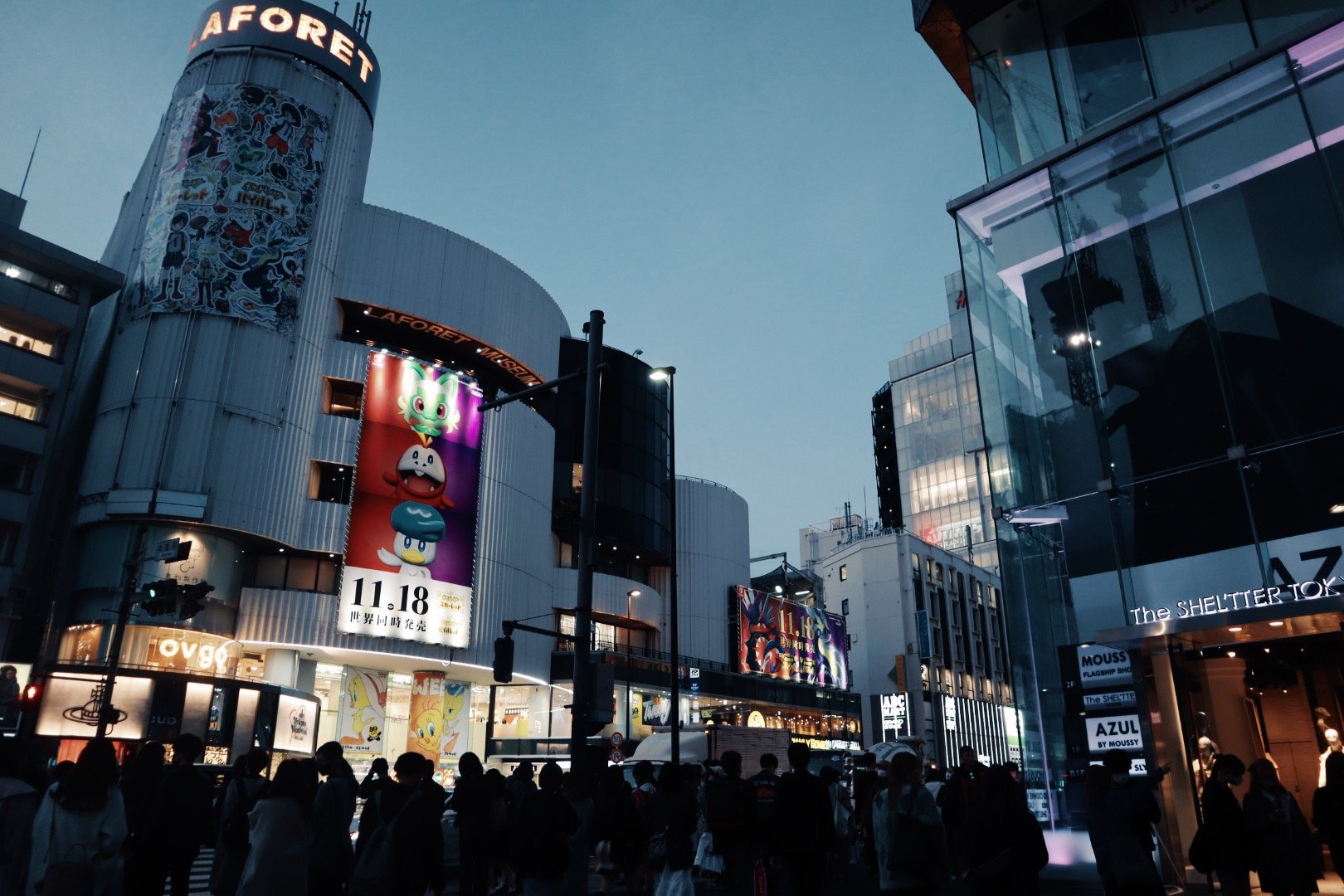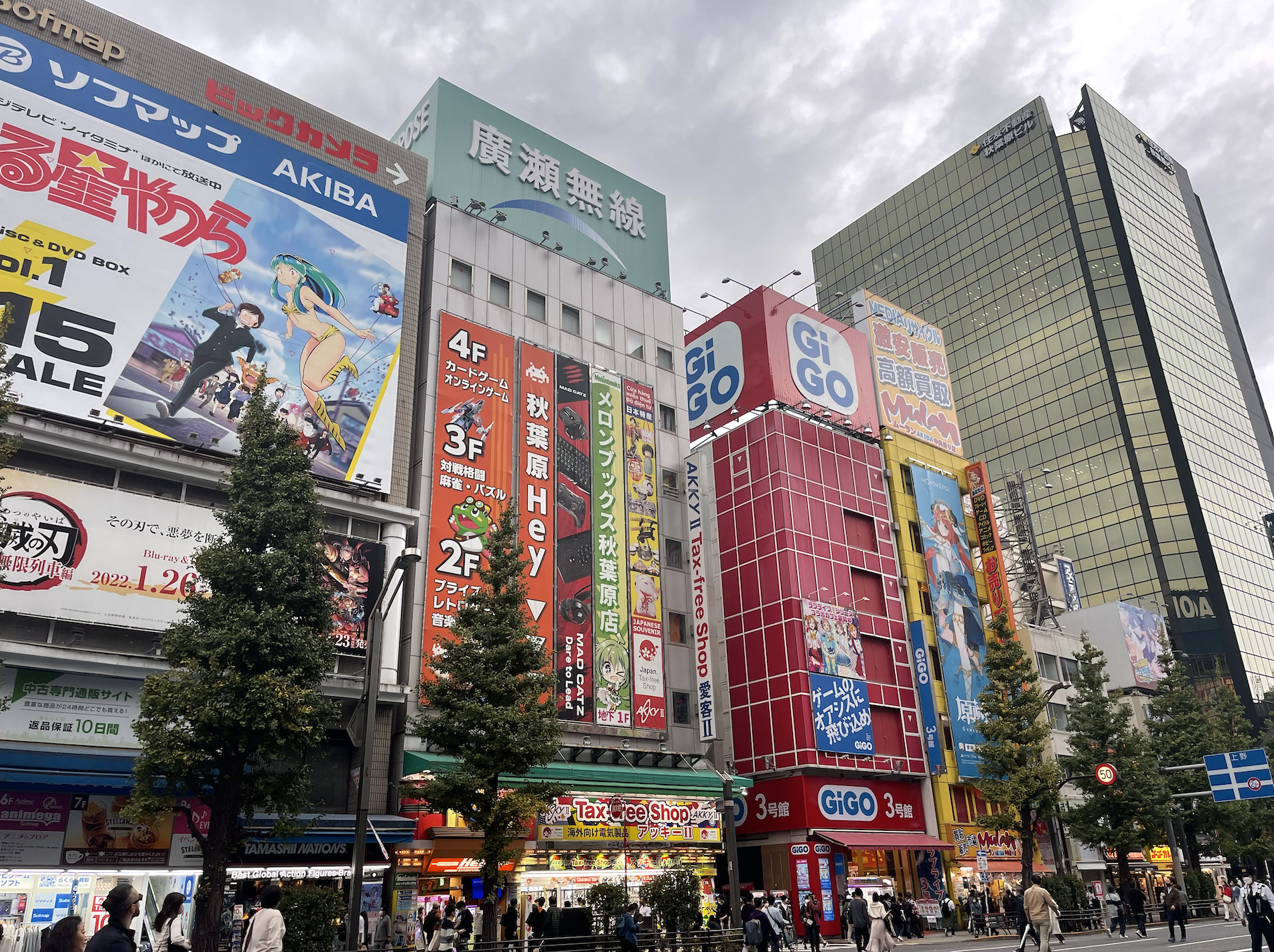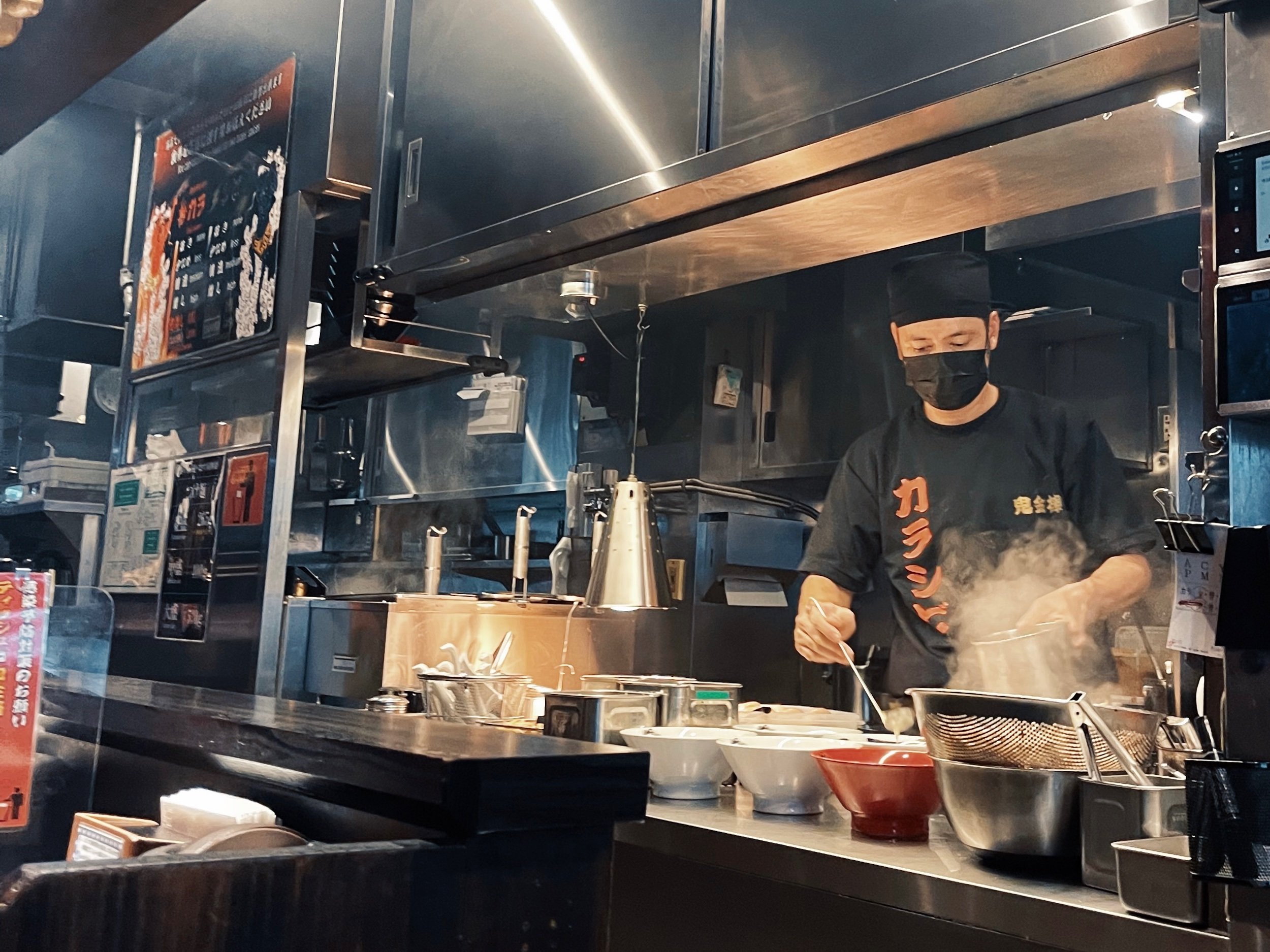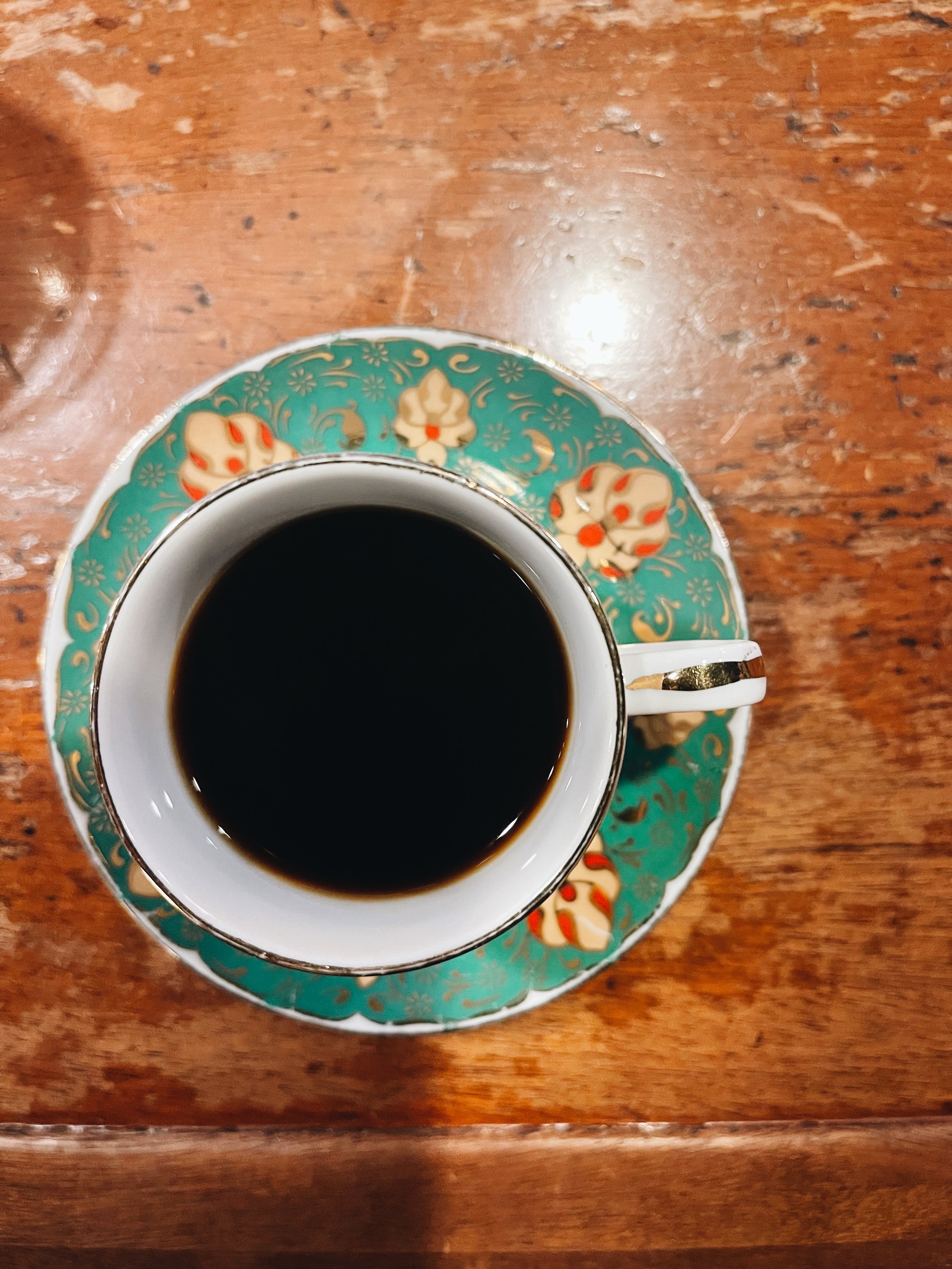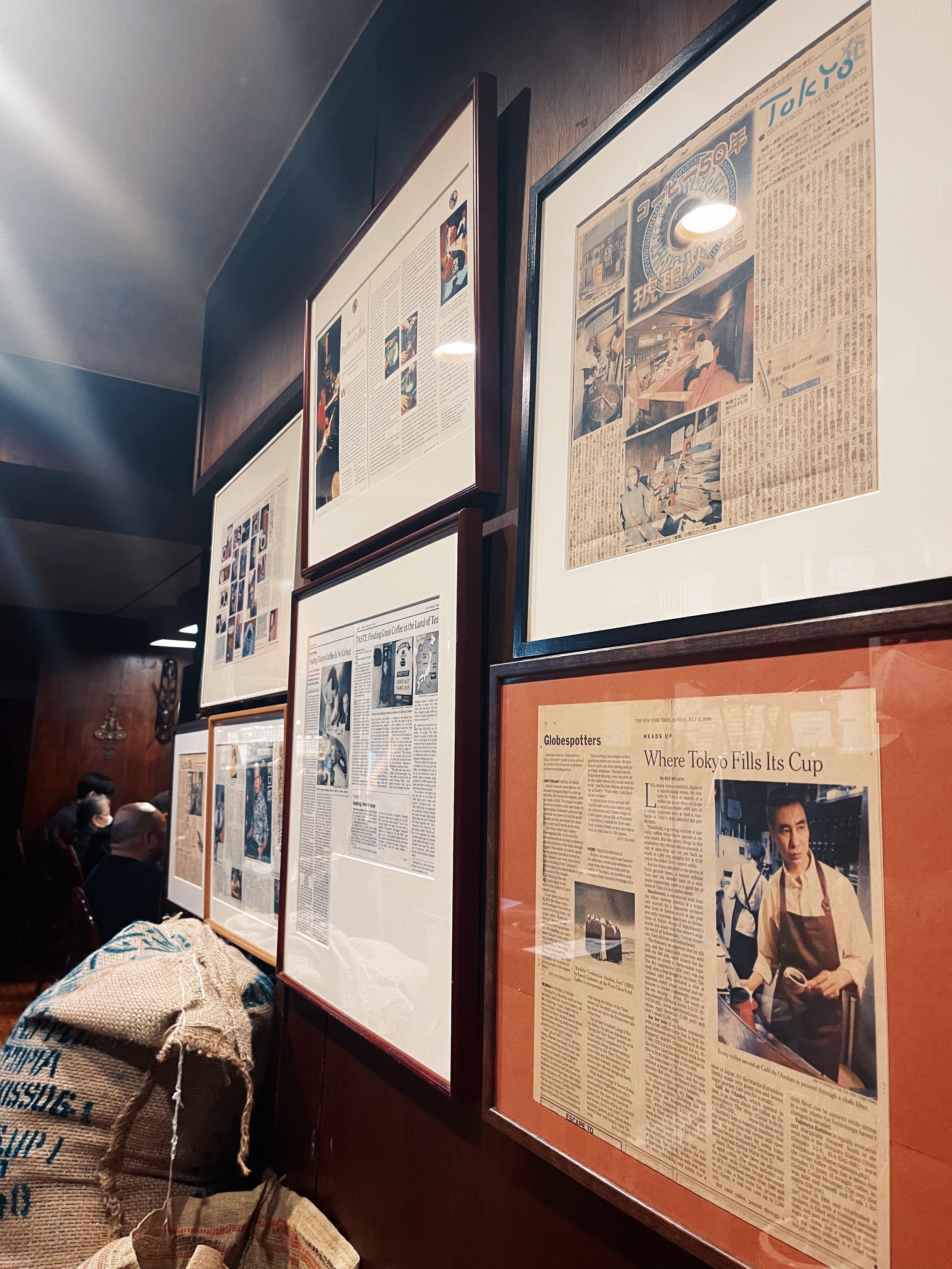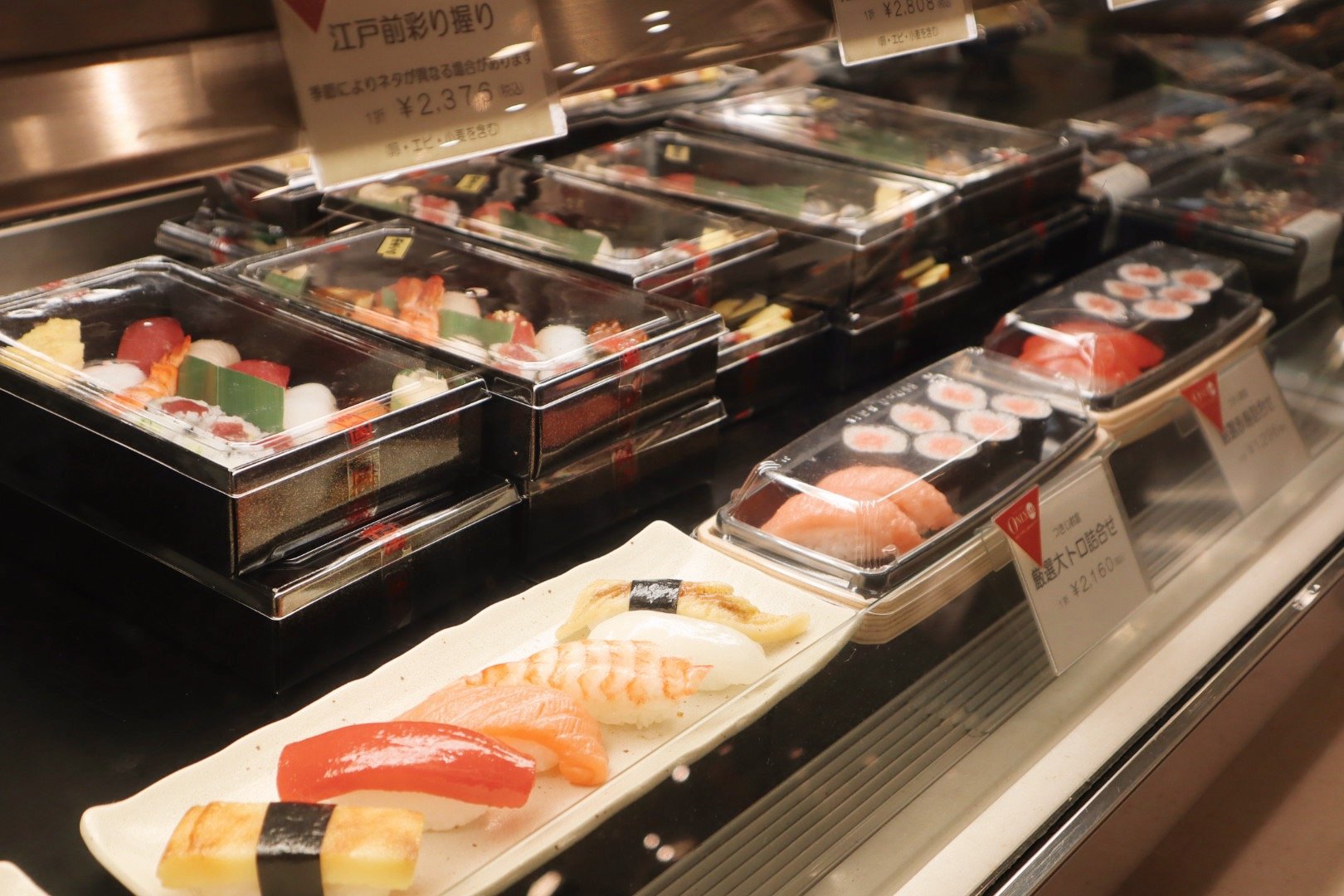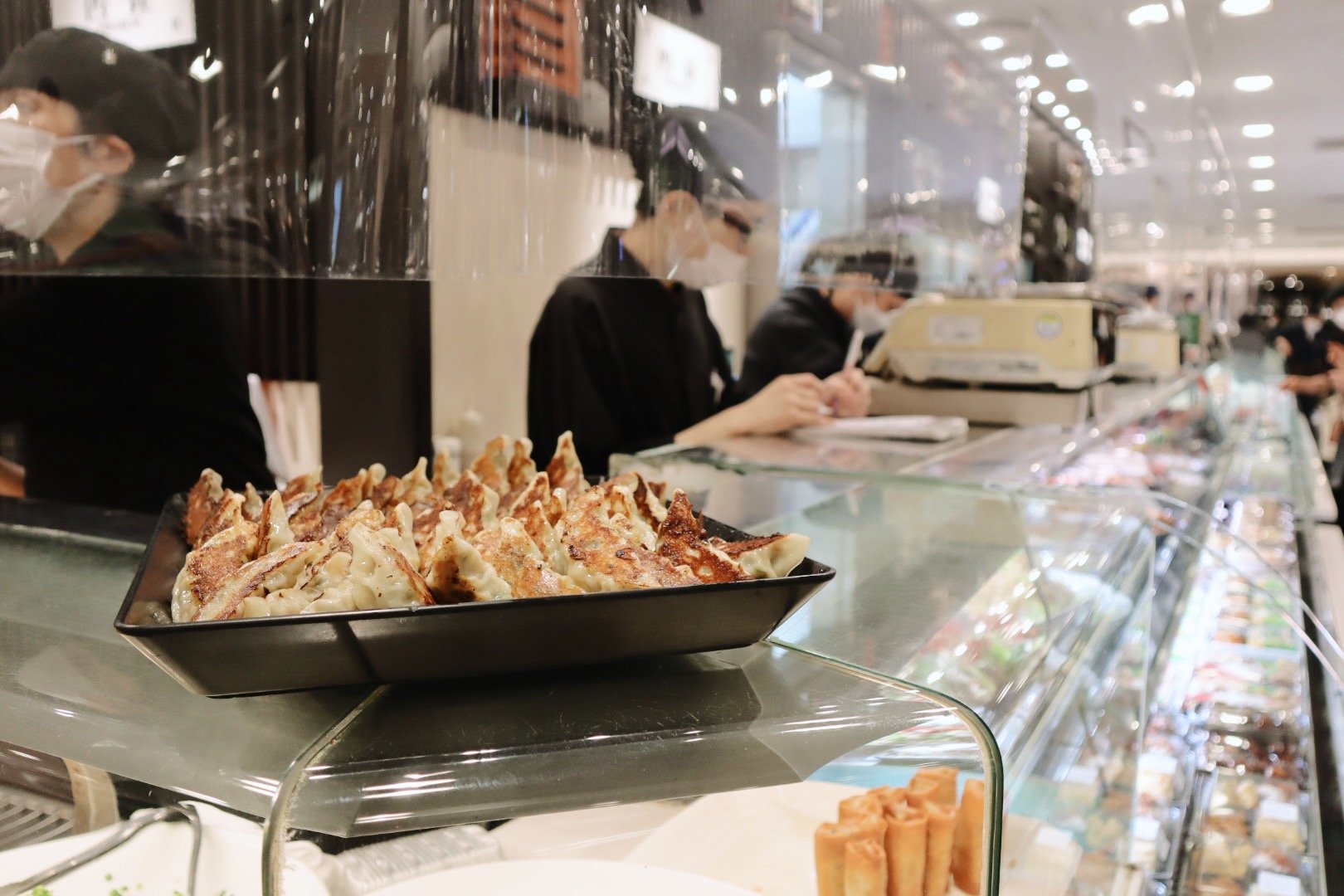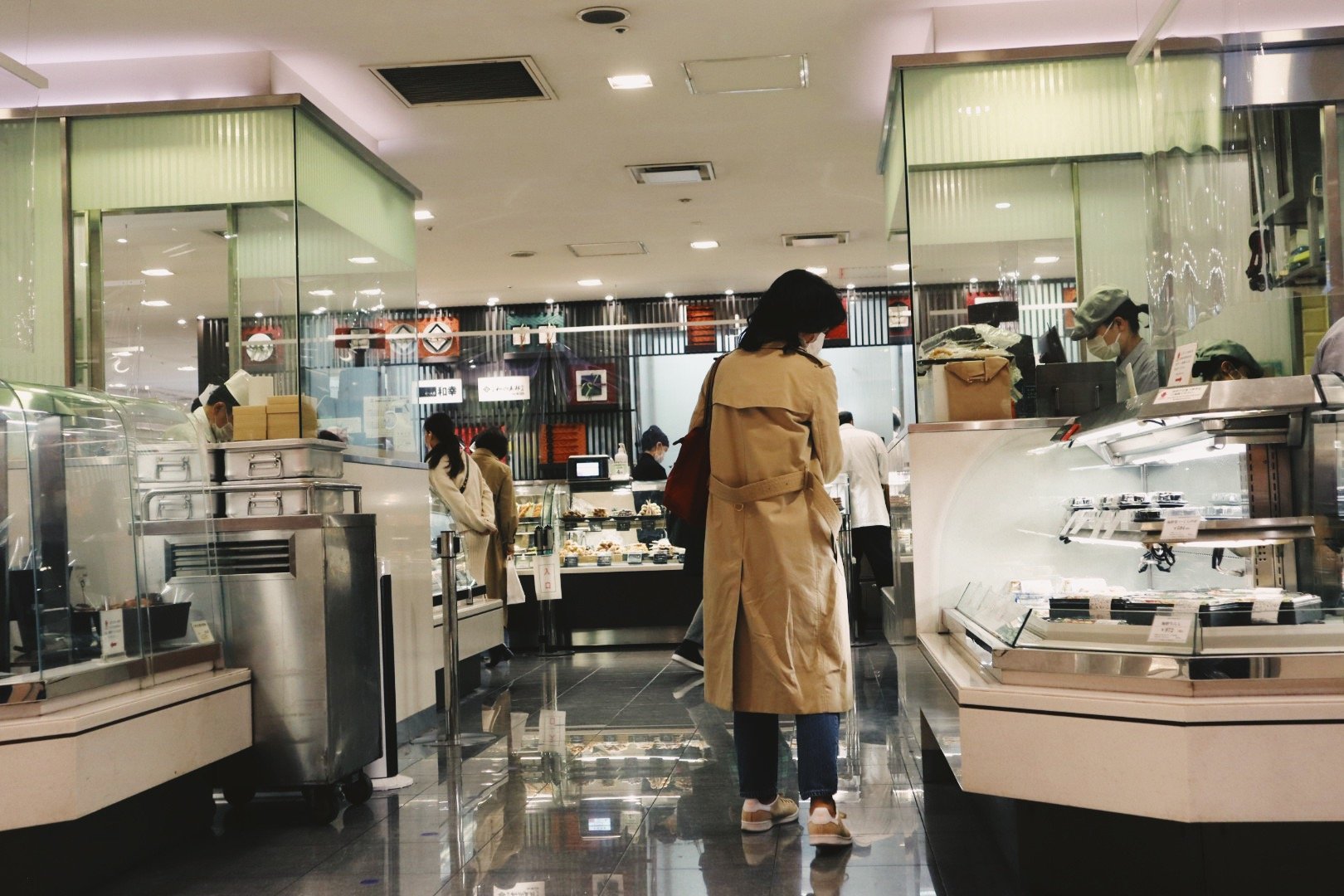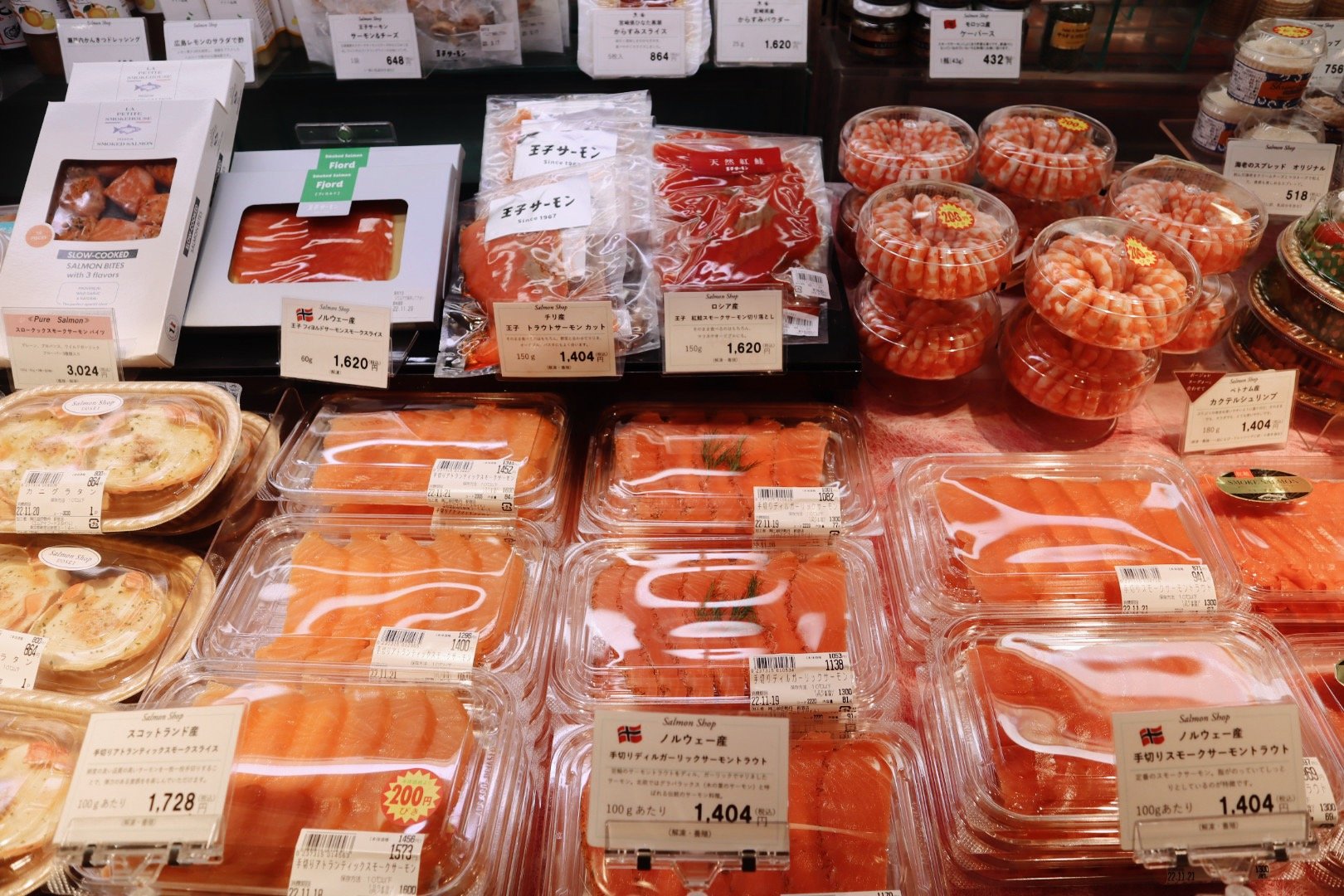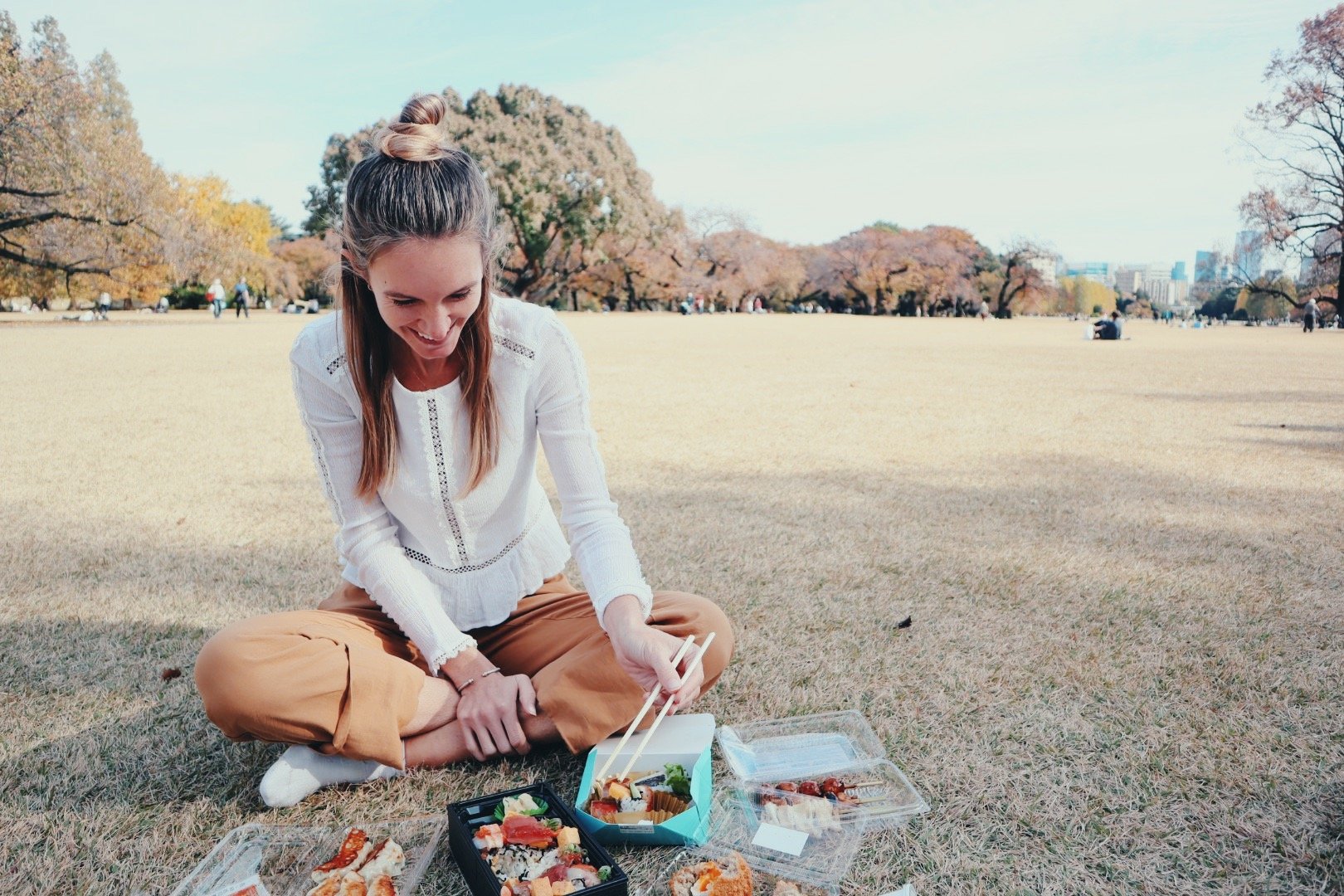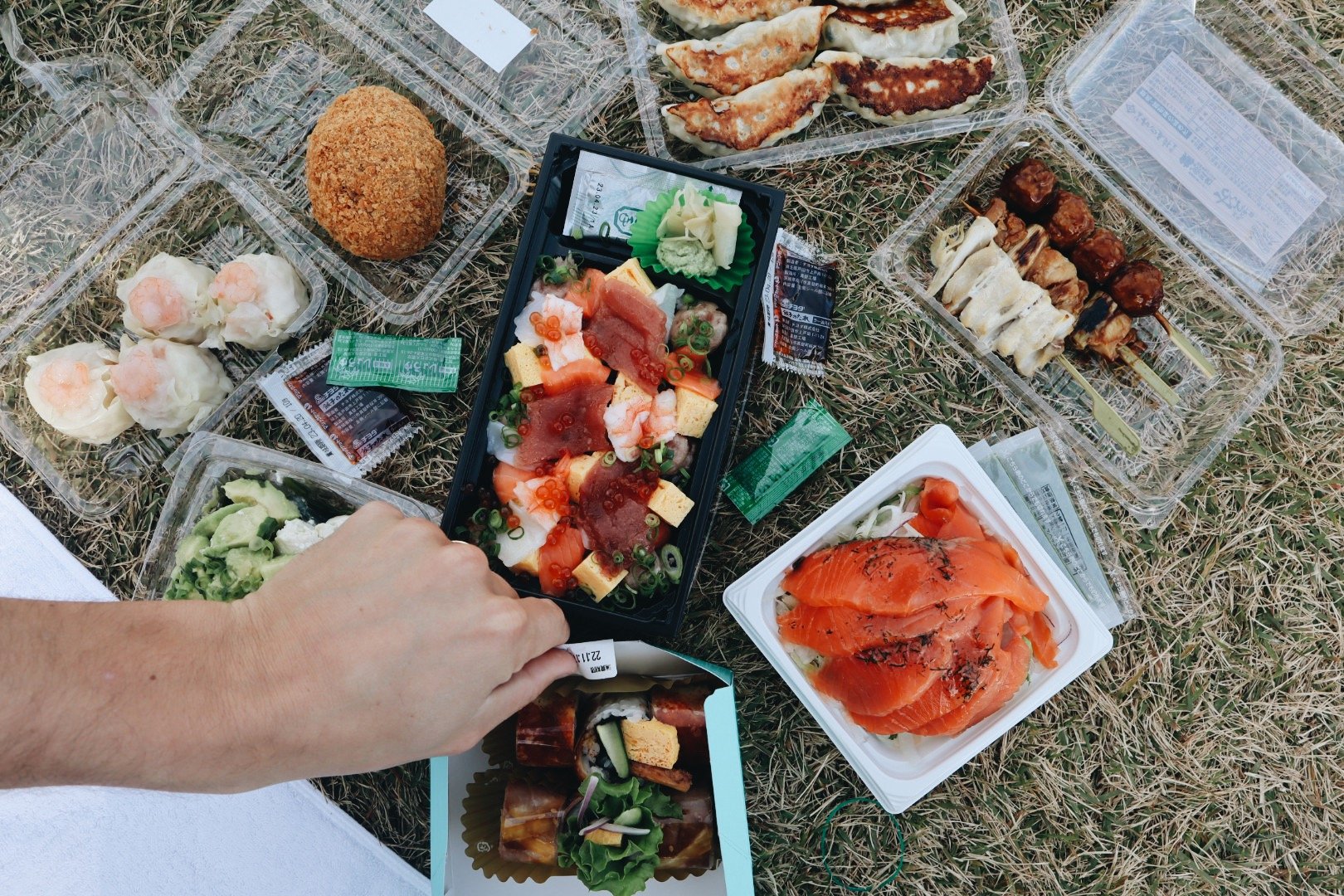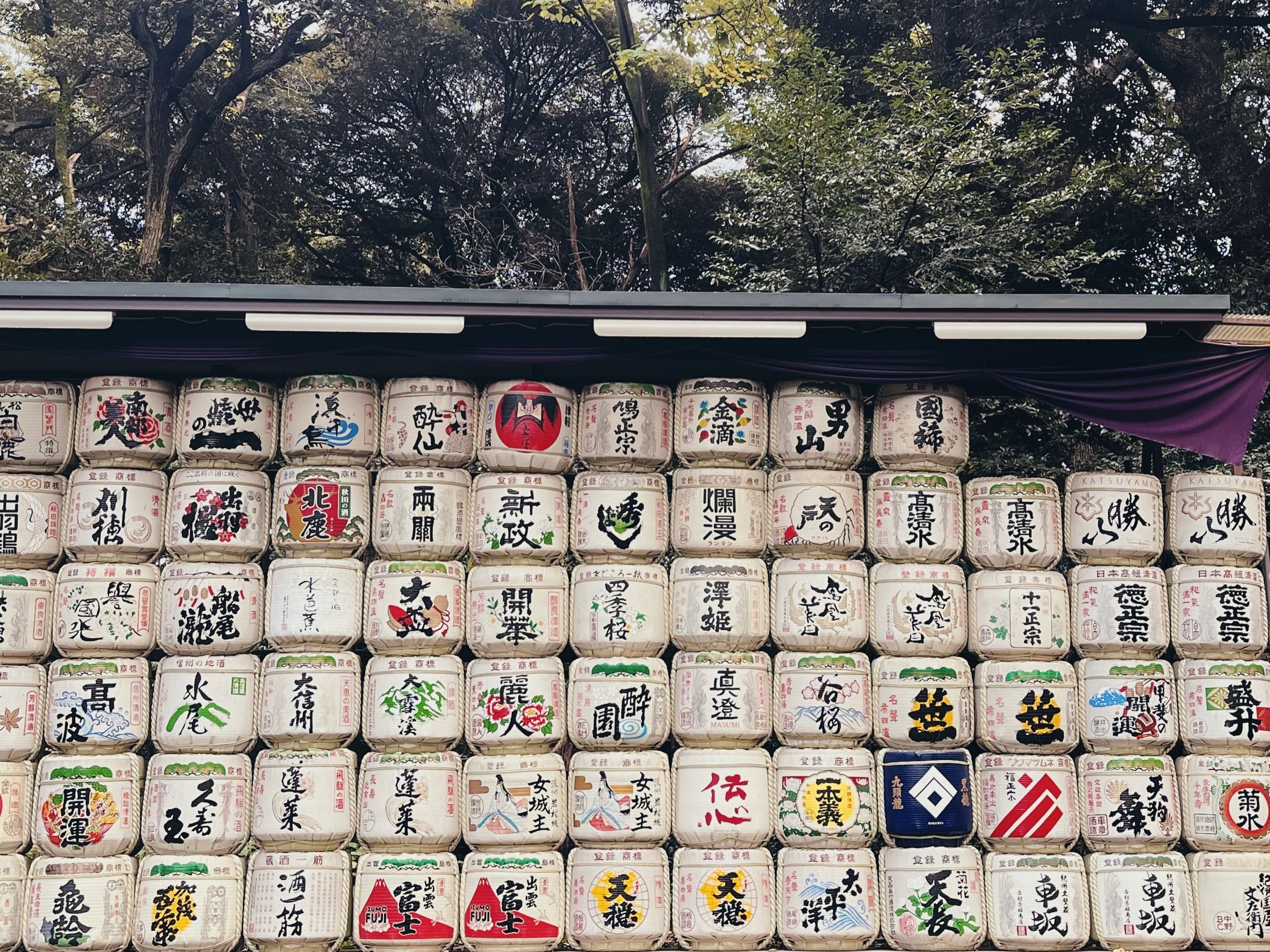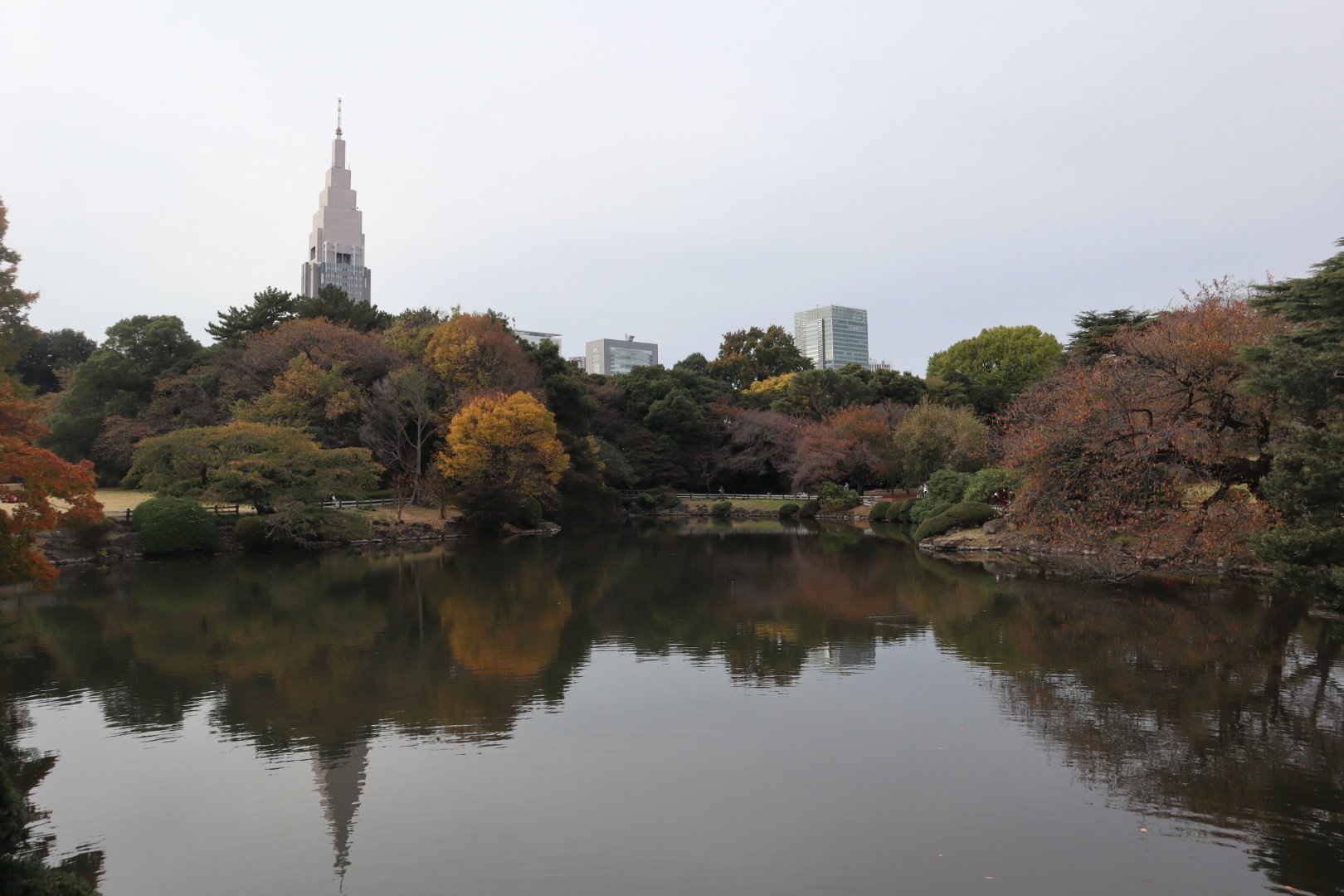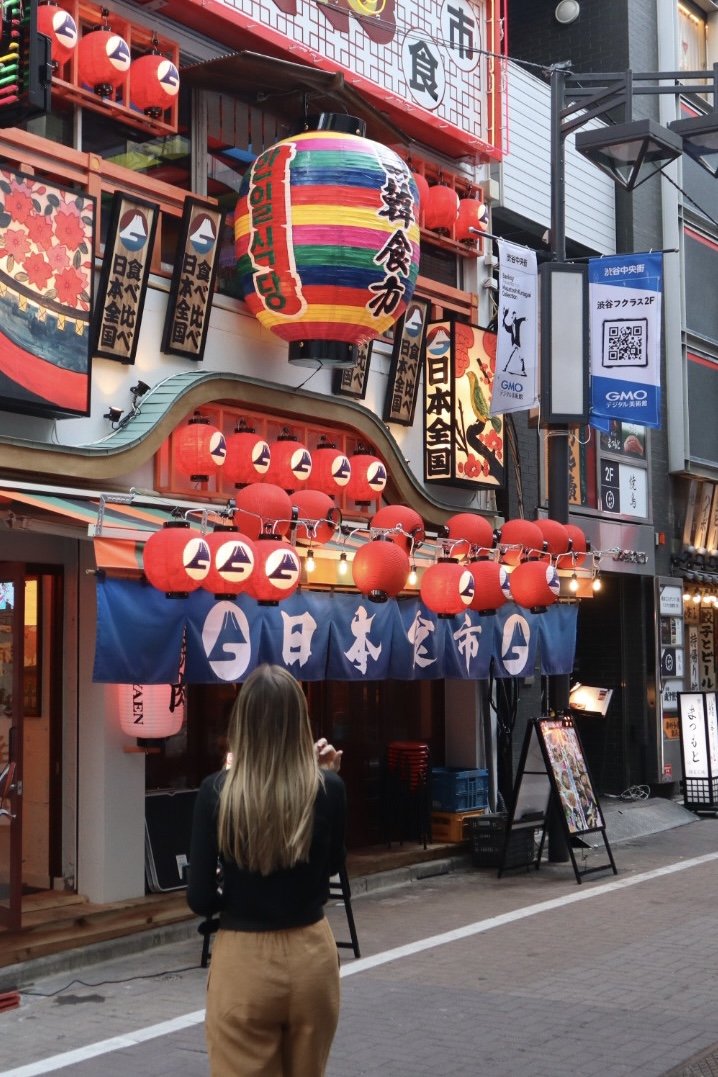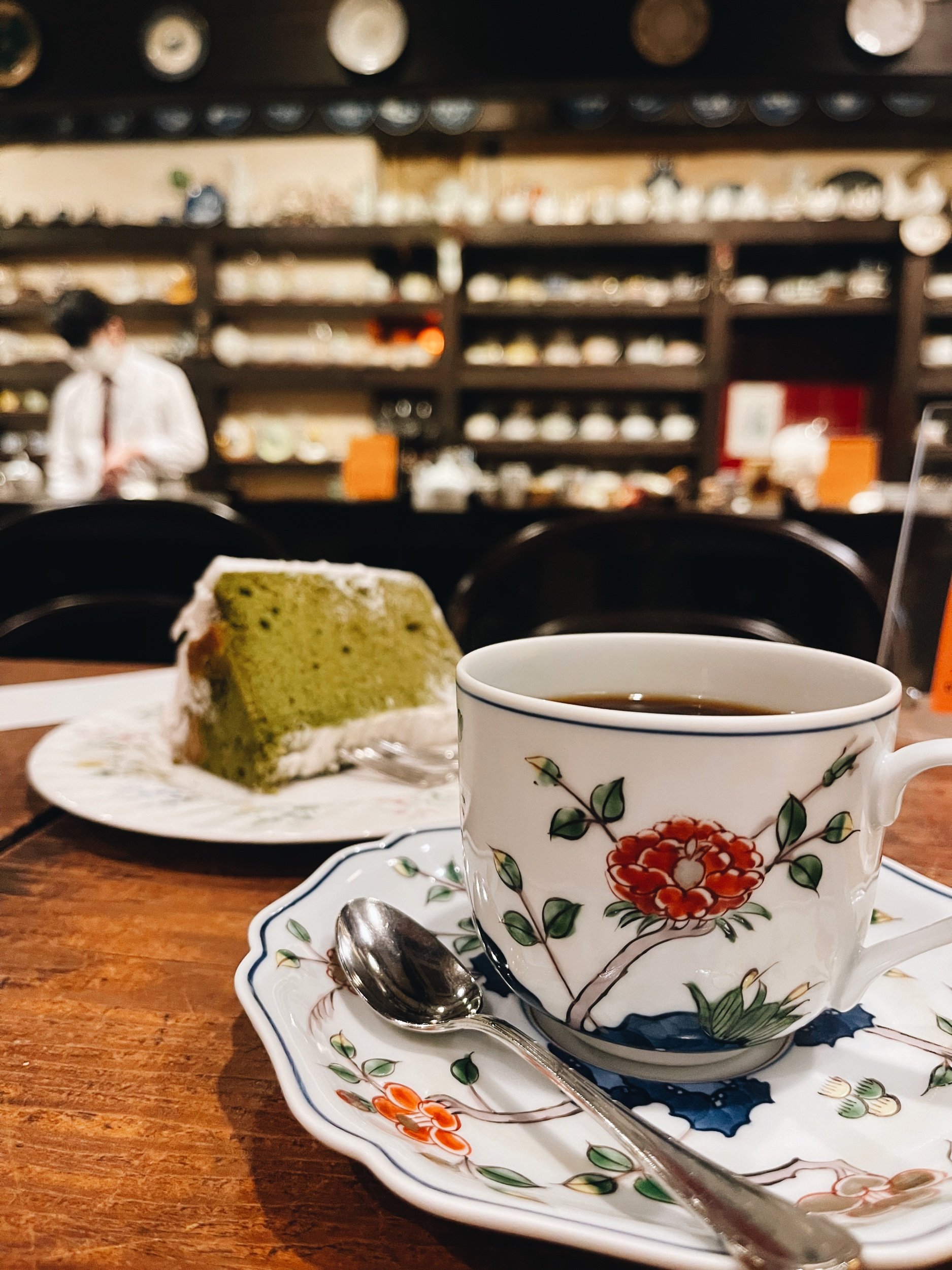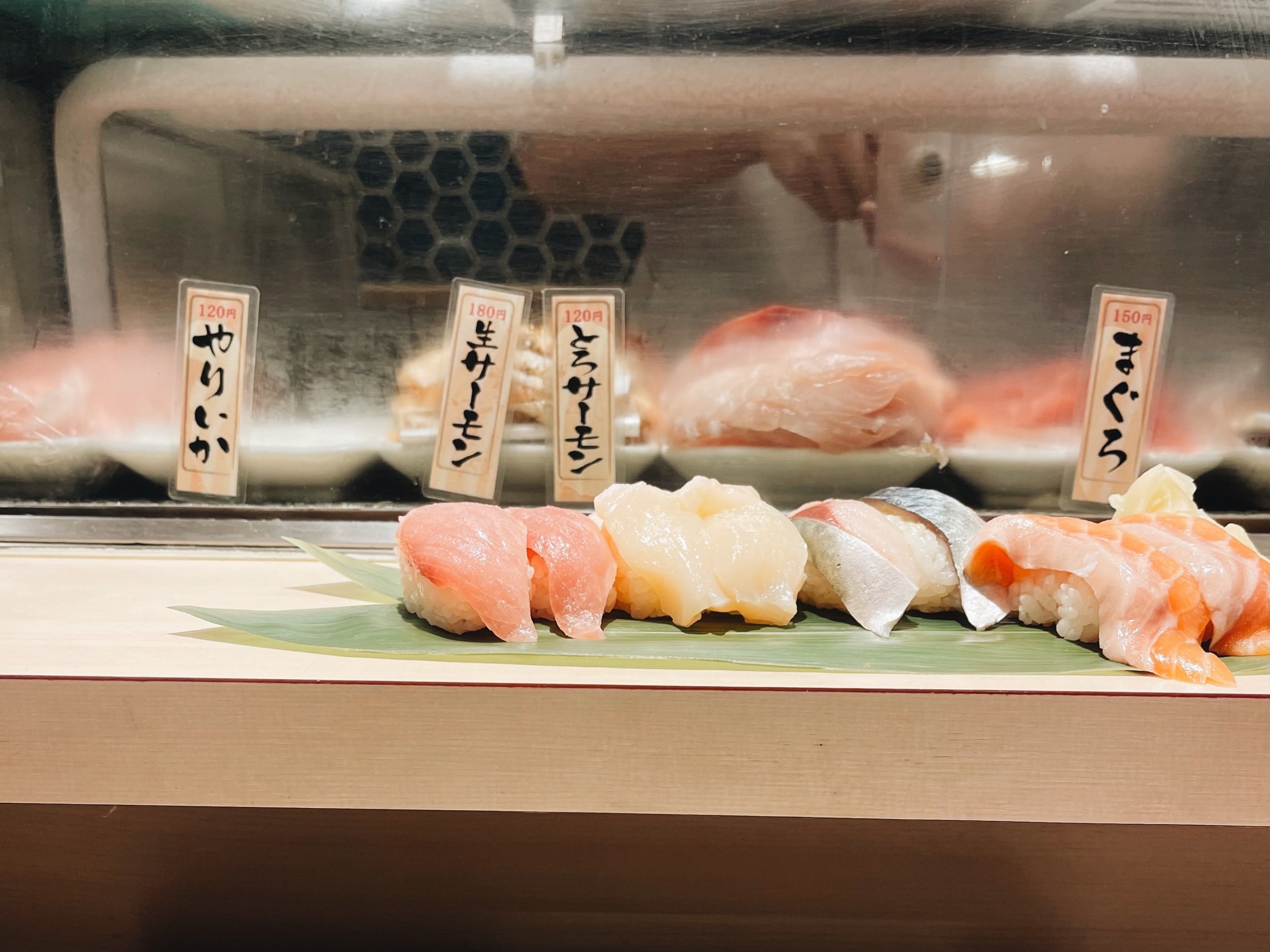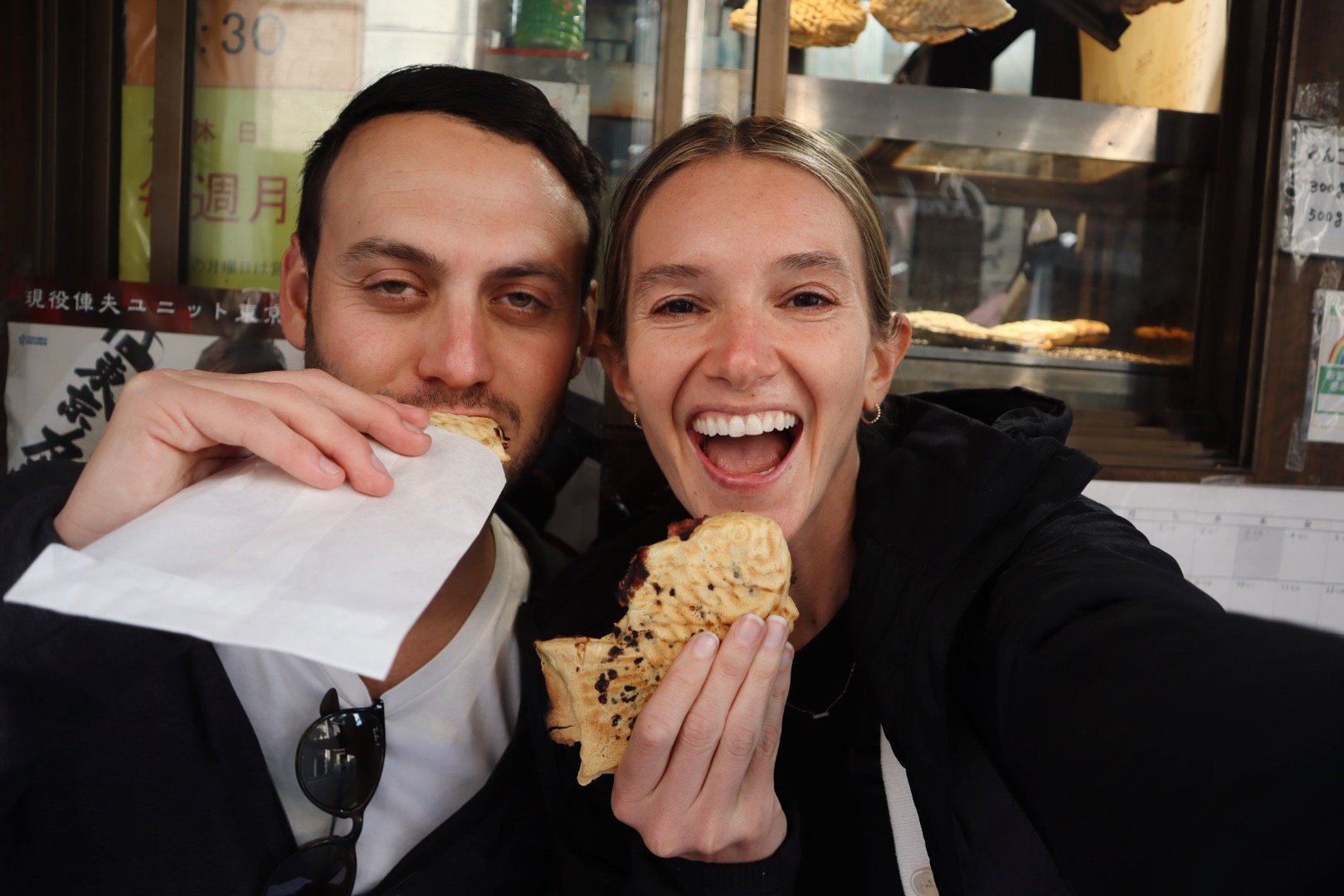Tokyo Firsts
A city that knows how to make a first impression.
Crossing the street in Shinjuku is like a game of Frogger. Dodging salarymen and hopping around karaoke-bound teens requires a swift movement in the shoulders and quick feet. Maneuvering to the other side without a mishap can feel like getting to the game’s next level - especially with the brick of a roller bag we were shlepping around. We made it to the other side, phew. But just when we thought the intersection madness was over, we looked ahead to the sheer volume of of heads bopping along the sidewalk. People shuffled past nondescript buildings fuming with sweet miso. Cars zoomed through the street while rumbles of the train were heard from below. Neon billboards lit the sky which added to the visual stimulation. It was a scene. But it wasn’t chaotic - it was visceral. There was an energetic pace in everyone’s step, like walking into a Vegas club for the first time. The movement felt unpredictable yet everyone had a place; each stranger in complete unison with the other as the neon lights flickered to a beat. I was captivated.
Up until this point, my ideas of Japan were purely assumptive, based on Instagram influencers and Travel & Leisure blog posts. We knew what to expect but at the same time had no idea what to expect. It’s that unknown feeling that left me giddy with anticipation. But nothing could have prepared me for how I would feel after spending 10 days in Tokyo. You only have one chance to make a good first impression, and Tokyo came with a powerful punch.
First queue
After a restless 12 hour flight, we were slightly delirious but mainly famished. When we left our hotel, I thought we were in for a casual, quick bite but quickly learned that dining in Japan was an all-immersive, swallowing experience; it was a series of many firsts. Michael had his heart set on tonkatsu so we took to the fluorescent streets, braved the frenetic flow of pedestrians and arrived at Gyukatsu Motomura. Approaching the restaurant hidden in the basement of a multi-story commercial building, we were greeted to our first queue. Twenty-ish hungry patrons stood in a perfect line, patiently waiting for dinner. I started to notice that there were, in fact, multiple queues snaking along the sidewalk, each leading to an undistinguished door, masked by a curtain-like fabric called a noren. We later learned that queues were engrained in the Japanese culture. Instead of making reservations, customers waited in line for for a multitude of restaurants. But queues don’t end there. People wait in line to go into a department store. People wait in line for the escalator. People even wait in line to get on the train. In a city packed with people in every corner, queues create calmness amidst the crowds. It was also a great indicator for popularity - a long line is a good sign. I quickly surrendered to the norm and joined the well-ordered crowd.
First bite
We slowly shuffled our way to the front of Gyukatsu Motomura and nearly skipped with excitement when the host signaled us toward the door. Inside the air was thick with intoxicating smells of salty pork. Tonkatsu is traditionally breaded pork filets, thinly sliced and fried into a crispy treat. Most of the time, the dish is only served at a tonkatsu restaurant alongside small ramekin dishes of cabbage, pickles, sauces, miso soup, and rice. In Japan, we discovered that many restaurant chefs had a clear focus on one dish. They would dedicate a portion of their lives to learning, cooking, and mastering that single item. Tonkatsu, ramen, sushi, yakitori, tempura, etc. You can only get these dishes at a restaurant where the chef specializes in them.
Given this specialty, ordering was simple. While we waited for our meal, I cased the tables realizing I would not be seeing a fork or spoon for the next five weeks. Instead, I found a wooden tray displaying chopsticks, toothpicks, and sauce. My fingers trembled as I nestled the chopsticks onto my ring finger, praying I wasn’t drawing attention. When our trays of food came out, my etiquette nerves slowly diminished as I sank my teeth into my first bite of Tokyo. The meat was tender but the outer crunch was crisp. Dipped in homemade katsu sauce, it was the tangy punch my tastebuds needed to awaken me from a sleep-deprived first day.
First slurp
The Japanese food darling in the US is undisputedly ramen. But no umami noodle dish in the US could prepare us for the flavor bomb our tastebuds met in Tokyo. We ventured out to Kikanbo one morning for a hefty bowl of noodles that swam in a pool of pork, toppings, and spicy broth. A kiosk sat in front of the restaurant where you order, receive a ticket, and wait. Everything was in Japanese so we optimistically punched a few buttons, prayed to the ramen gods about our order, and joined the back of the queue. Again. The line moved quick and we secured high top seats at the bar. We watched in awe as bouncy noodles were dipped into boiling saucepans and goopy soft boiled eggs were surgically sliced. Upon first slurp, there was a spice in the broth that seized my tastebuds’ attention. An immaculate blend of red peppers called “kara” and fragrant oils known as “shibi” combined with miso to create a depth in flavor that I’ve never encountered in ramen. The pork slices were sliced delicately. The noodle thick and chewy. It was divine.
But let me take a moment to honor ramen etiquette. We’ve grown up learning about what is and is not polite. Lay your napkin on your lap; take small bites; no elbows on the table; etc. In Japan, we got to experience first hand what ramen etiquette was like. Most of the rules apply here with one small add. Slurping your noodles is encouraged and signifies immense satisfaction to the chef. Ultimately it indicates how much you’re enjoying the meal. During the entire duration of our time at Kikanbo - mind you was approximately twenty minutes - a choir of slurpers gargled their noodles down with their broth. We joined in on the fun to showcase our gratitude and see if we could be as loud as the more experienced patrons.
First sip
Despite Japan’s fame for matcha, the locals adore coffee. Baristas displayed a keen knowledge for coffee wherever we went and took immense pride in their craft. Japan had kissatens which were specialty shops that put a strong emphasis on the entire coffee experience. The shop is commonly centered around a bar where guests can immerse themselves into the making of each cup and revel in the smells of freshly ground beans. We walked into Cafe de l’Ambre, a small kissaten that’s been open since the ‘80s. I’m accustomed to seeing Chemex and fancy scales when walking into a specialty coffee shop, but the baristas at Cafe de’l Ambre were using antique scales, flannel filters, and old saucepans as they worked. Each coffee cup was made from porcelain since the owner Sekiguchi Ichiro believes the porcelain feels better against your lips and adds to the enjoyment of sipping a hand brew. He ages his beans for months - sometimes years - before his team roasts to provide a unique depth of flavor for his guests. While the cup of coffee might be one of the best drips I’ve ever had, it was the entire hand poured experience that won me over. We sat at the bar for over an hour, watching the master baristas master the art of making an irresistible cup of joe.
First shopping spree
It was impossible to miss the magnitude of malls in Tokyo. Each time we stepped out of a train station, I’d spot a high end storefront that led into a massive mall that sat multiple stories high. If the sheer size didn’t capture your attention, the display windows of neon-colored mannequins dressed in the latest fashion trends would draw you to a halt. However, if you didn’t look closely, you’d completely miss what lay hidden below - the basement level (B1). Following the signs to B1, we slipped passed the cases of sunglasses and rows of purses in the Isetan Shinjuku Department store and descended down the escalator. Here we were welcomed to an entirely new world underneath Tokyo - the food court.
Except this was anything but a traditional food court. B1 reminded me of of a Japanese Eataly in some ways. Small glass counters created a maze for shoppers to walk around and assess their purchasing options, similar to the makeup counters at Nordstrom’s. Any kind of Japanese food item could be found here. From fresh slices of sashimi to hot off the pan fired gyoza, we carefully selected the best looking bites and headed over to the Shinjuku gardens for a picnic. We proceeded to go back to B1 at Isetan two more times - it was the closest thing to a mall I could get Michael into.
Our ten day journey through this electric city left us with a strong desire for more. It felt like we had only scratched the surface of the true beauty wrapped up in the explosive streets. But Tokyo was just an entry point, the gateway into a region we would become completely enamored by over the next five weeks.
